#Easter 1916 Series
Explore tagged Tumblr posts
Text
#OTD in 1916 – Death of Michael Joseph O’Rahilly, ‘The O’Rahilly’, a republican who took part in the Easter Rising, during which he was killed in the fighting.
Michael Joseph O’Rahilly was born in Ballylongford, Co Kerry in 1875. He was a republican and a language enthusiast, a member of An Coiste Gnótha, the Gaelic League’s governing body. He was well-travelled, spending at least a decade in the United States and in Europe. He was a reasonably wealthy man; the Weekly Irish Times reported after the Easter Rising that O’Rahilly ‘enjoyed a private income…
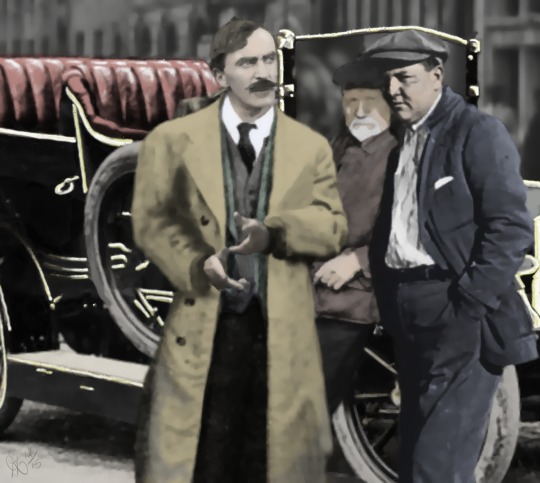
View On WordPress
#"The O&039;Rahilly#1916 Easter Rising#An Coiste Gnótha#Ballylongford#Co. Kerry#Cumann na mBan#Declan Kerr Art#Dublin#Easter 1916 Series#Gaelic League#IRB#Irish Citizen Army#Irish Volunteers#Language Enthusiast#Michael Joseph O&039;Rahilly#Moore Street#Sackville Lane#William Butler Yeats
2 notes
·
View notes
Text
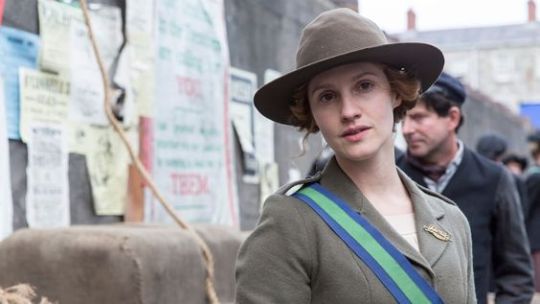
Rebellion (2016) Young Guns
S1E1
A group of young men and women in Dublin in 1916 are embroiled in a fight for independence. For our young protagonists the world will never be the same again.
*Frances O'Flaherty is seen painting an "Irish Republic" flag. This flag was actually sewn by Mary Shannon and painted by Theobald Wolfe Tone FitzGerald and flew above the GPO during Easter Week. After Easter Week, it was seized by British Soldiers and kept in the Imperial War Museum in London. It was returned to Ireland as part of the 50th anniversary commemorations. The flag is now in the National Museum of Ireland.
#Rebellion#2016#Young guns#S1E1#drama#history#war#period drama#Ireland#Easter rising#revolution#1916#Dublin#just watched#Ruth Bradley#tv series
1 note
·
View note
Text
I only got into Rivals very recently but I think there is an argument to be made that there is a certain amount of parallelism between Declan and W. B. Yeats, whom he has so great an interest in that he works on a book about him.
Both have/had in complex relationships with actresses called Maud, both threw themselves, rather idealistically, into a cause they increasingly grow/grew jaded about (the disappontments of a career in TV journalism/Irish independence as a near-mythologised concept that Yeats chose to cease supporting at the very latest in the wake of the Easter Rising of 1916), both continue/continued to do what they knew they were good at (journalism/writing) and knew they will/would receive acclaim for, at times at the expense of their wives.
If Declan continues down his path in seasonn2, he could possibly become very much like Yeats in many negative aspects, a talented man very much confident of his own abilities, but also easy to ostracise others; this post merely scratches the surface and represents my personal opinion on the series (and Yeats), but I do enjoy these subtleties in an otherwise rather (delightfully) gaudy and saucy series.
23 notes
·
View notes
Text
okay DBD fandom. i don't know if i've set myself on a wild goose chase or just a chase, but i was hyper-analyzing the first episode and noticed the comic Edwin was reading way back in 1916

i was curious if i could find it online anywhere just to see if it was a fun little easter egg and. i can't find that edition anywhere. i can't figure out what the edition number is, or the first letter in the title, "The _hiltern House Detectives" and have tried various combinations looking things up and nothing. i tried searching for just the "True Library Blue" and came across various other editions of the (what i think is) comic on this archive, which seem like the same series, even to the font and headings.

If anyone can find anything about the edition please please please share because, will this be relevant to anything?? Who knows! But I do know this will be plaguing me for the rest of time because I spent 45 minutes looking for it and I should be in bed this very second.
(Note: I haven't actually read the DBD comics yet, darn everyone else checking them out at the library, so I have no idea if this comes up in them at all.)
#it's probably a neat little detail but ggggraagrgg#i will go to bed now thinking about lost media and the beauty of art#sleepy posting#dead boy detectives#lost media#does this count as lost media?#idk
24 notes
·
View notes
Note
Hi! I've been following your radioapple au since your first work, and I was wondering what was some of your inspirations surrounding the AU and current plot? I really enjoy this AU and would love to know what went into your head through the drafting period and such
Thank you so much! This is an interesting question with a somewhat convoluted answer. But I love talking about this stuff and am happy to try to break it down!
I wrote A Terrible Beauty with the intent that it would be a standalone novella. I loved the idea of Alastor and Lucifer already knowing each other and I got the image in my head of just that opening scene, in the tent during WWI. So I wrote that and then worked out the story that scene belonged to and wrote the rest. And that's A Terrible Beauty.
But there was a bigger story that A Terrible Beauty belonged to, particularly vis-a-vis Lucifer. I happen to know a moderate amount about the figure of Lucifer, in the broader sense. There's a lot you can pull from—Talmud and Kabbalah and pseudepigrapha and exegesis and all that fun stuff. And, honestly, I don't love Lucifer's backstory in Hazbin Hotel. So, since A Terrible Beauty was already an AU, I went all in, took apart a lot of the show's world building, and rebuilt it. At that point, I actually was still on the fence about writing the series. It was more for my own entertainment.
But I had this whole AU setup, with a different foundation for the RadioApple relationship and a lot of world building around Lucifer, Heaven, and Hell. I love an established relationship in fiction because that's where the real work is. Intimacy and trust and figuring out how to be together, in this case when one of them is an unrepentant sinner with the emotional structural integrity of a wet cardboard box and the other is an eternal being of the cosmos who's had a rough ten thousand years.
On top of these two profoundly fucked up people figuring out how to love each other, I had my reconstructed Lucifer backstory, which is more in line with some established religious canon (different sources contradict each other, so I took what I wanted and stitched it together). There was a story there and I decided that story was worth writing.
To keep it cohesive and bolster the series architecture, I threw in a couple of little stylistic flourishes. The titles are all from "Easter, 1916" and every fic begins with a formulaic opening line (something about Alastor and the devil).
Overall, it is everything I love in one place. Alastor's asexuality, which I write very similar to my own (that's its own topic entirely), Lucifer deciding to actually rule Hell for the first time in millennia, what that choice means and the broader consequences thereof, how Lucifer's relationship with Alastor is different from his relationship with Lilith was and why that matters, literary and biblical references everywhere you look—I could keep going but you get the idea.
This in all likelihood was a more comprehensive answer than anyone is actually looking for. But it is how my different-first-meeting AU turned into a series. And I continue to be delighted beyond words that so many people are enjoying it!
23 notes
·
View notes
Text
Loves Revolution
Prologue
Pairing: Bradley Bradshaw (as Micheal Collins) x Jake Seresin (as Harry Boland) x OC! Madison Cassidy
Word count: 500words
A/n: This is the first post to my new series so please be nice! I'm going to try to make this into a series so please show this story a bit of love and reblog!
Summary: Bradley, Jake and Maddie have been friends for many years ongoing. Bradley from Cork and Jake and Madison from the troubled Dublin, have been close for life. Now fighting in the 1916 Easter rising and the ongoing history to the Treaty and the independence of Ireland their story lives on.
History: Bradley (represents) :Michael Collins (October 16, 1890 – August 22, 1922) was an Irish revolutionary, soldier, and politician who was a key role in the early twentieth-century campaign for Irish independence. During the Irish Civil War, he served as Director of Intelligence for the Irish Republican Army (IRA) and as a government minister in the self-proclaimed Irish Republic. From January 1922, he was Chairman of the Provisional Government of the Irish Free State, and from July till his death in an ambush in August 1922, he was Commander-in-Chief of the National Army.
Jake (represents) :Harry Boland (April 27, 1887 – August 1, 1922) was an Irish republican politician who led the Irish Republican Brotherhood from 1919 to 1920. From 1918 until 1922, he was a Teachta Dála (TD).He was elected as the MP for Roscommon South in the 1918 general election, but, like other Sinn Féin candidates, he did not serve in the British House of Commons, instead sitting as a TD in the First Dáil. Boland was elected to the second Dáil as a TD for Mayo South-Roscommon South in the 1921 general election. He was re-elected as an anti-Treaty candidate in 1922, but he perished two months later during the Irish Civil War.
History :The Easter Rising (Irish: Éir Amach na Cásca), often known as the Easter Rebellion, was an armed insurgency in Ireland in April 1916 during Easter Week. While the United Kingdom was waging the First World War, Irish republicans started the Rising against British control in Ireland with the goal of establishing an independent Irish Republic. It was Ireland's greatest important insurrection since the 1798 rebellion and the first armed battle of the Irish revolutionary period. Beginning in May 1916, sixteen of the Rising's leaders were executed. The executions' nature, as well as following political developments, eventually contributed to an upsurge in popular support for Irish independence.
Warning: Mentions of gun use, ptsd, mentions of death, mentions of shooting, flirting, mentions of abuse, description of dead body, death, blood

"Sir, we got the General Post Office surrounded, Sir! We believe that inside are De Valera, Macdonagh, Clark, Connolly and a lot of other rebellions, sir!" One of the funny dressed British soldiers replies to their head commander, with hand at forehead, ready for a salute. This is how the English planned it all along, for the most important rebellions to be stuck at one place, surrounded with no escape.
"So we have the G.P.O, good, very good, but what about O'Connells street, Stevens green, The Liffey and the four courts?" The head commander asked the young man who still held his hand above his head, not moving an inch. "The areas are empty, sir! Either captured or escaped but the rest are at the G.P.O, sir!"
They're all where they were supposed to be, all in one place, no room to escape and they'll give in to this nonsense, they had no way to continue fighting against the British or loyal Irish. The undertakers or loyal Irish were against the rebellions, fighting against them at this very moment, all they had to do now is give themselves up to the English.
"Are there any women inside, lieutenant?" Any innocent woman that had been stuck inside the G.P.O that had been inside the building for the past five days, did not deserve the faith they may face in several minutes from now. The soldiers aligned outside of the building will not hesitate to kill anyone on the inside but the women didn't deserve it.
"There's women of aid and very little volunteers, sir! We believe that one of the fellow female friends of De Valera's help is inside the building. Her parents put her off name Madison Cassidy, but to the public she's known as 'Maddie', sir!" A woman so apparently known to the public but how? No woman that the commander has heard of went by that name or was 'known to the public', no woman has ever had the might or power to be so known in the streets of Dublin or the county of Leinster. "What do you mean 'known to the public', lieutenant?" "She's a public speaker, sir!"
A female public speaker? And that was apparently known to people. Absurd. An absolute absurdity. Some young girl, that he has never heard of decided to become a public speaker. What a joke! She should be scrubbing the dishes, washing the linen, taking care of the kids or cooking and not wasting her time over public speeches. And who would even listen to her? Some sort of female, trying to put her thought into a speech that is apparently supposed to motivate people to do something.
And she believes that's gonna work, but like the lieutenant mentioned, she did work with De Valera. "Bring her to me, nobody lay a finger upon her, understood?" "Yes sir!"
Current taglist:
@callsign-magnolia
@shanimallina87
@callsign-dexter
@rosiahills22
@horseslovers2016
@djs8891
@hookslove1592
@emma8895eb
@hardballoonlove
@kmc1989
@dempy
@mamachasesmayhem
@senawashere
@emma8895eb
@buckysteveloki-me
@sweetwhispersofchaos
@a-beaverhausen
#jake seresin#hangman x reader#hangman top gun#top gun hangman#jake hangman seresin#jake seresin imagine#jake seresin x reader#jake seresin x you#jake seresin x y/n#jake hangman fic#jake hangman x reader#jake hangman x you#jake hangman imagine#hangman imagine
20 notes
·
View notes
Text



Professor Hector Munro Macdonald, one of Europe’s foremost mathematicians, died on the 16th of May, 1935.
Hector was born in Edinburgh in 1865, the son of Donald MacDonald, originally of Kiltearn, Ross-shire, and his wife Annie, daughter of Hector Munro of Kiltearn.
Hector’s earliest education was in Edinburgh, but after his parents movrf the family to Fearn, in Easter Ross, he went to school there, and afterwards to the Royal Academy, Tain, Old Aberdeen Grammar School, and the University of Aberdeen, where he graduated in 1886 with First-Class Honours in Mathematics and won a Fullerton Scholarship.
Macdonald proceeded to Cambridge after completing his first degree in Scotland. Entering Clare College, Cambridge, as a foundation scholar, he graduated in the Mathematical Tripos of 1889, was awarded a fellowship at Clare in the following year and, in 1891, was awarded the second Smith's Prize.
In 1901 he received the Adams Prize and was elected a Fellow of the Royal Society of London (FRS). He was awarded the Royal Society's Royal Medal in 1916.
Macdonald held his fellowship at Clare College until 1908 and in 1914 he was awarded an honorary fellowship of his former College. From 1916 to 1918 he served as President of the London Mathematical Society. During World War I, Macdonald did war service in London attached to the Ministry of Munitions where he dealt with wages. He was transferred to the Ministry of Labour in 1916, where he remained until 1919.
Macdonald worked on electric waves and solved difficult problems regarding diffraction of these waves by summing series of Bessel functions. He corrected his 1903 solution to the problem of a perfectly conducting sphere embedded in an infinite *geneous dielectric in 1904 after a subtle error was pointed out by Poincaré. The major problem which he tackled was that of wireless waves. About the time that Macdonald published his prize winning essay on electric waves, Guglielmo Marconi was successful in the transmission of the first wireless signals across the Atlantic. However this posed a major problem at first because wireless signals, like light, should not be capable of being bent round the surface of the earth as apparently Marconi wireless signals were. Macdonald suggested that the wireless waves were being refracted by the atmosphere. It is now known that in fact the waves are reflected by the ionosphere.
Macdonald became Professor of Mathematics at the University of Aberdeen in 1905 and remained at the University for the rest of his life.
7 notes
·
View notes
Photo
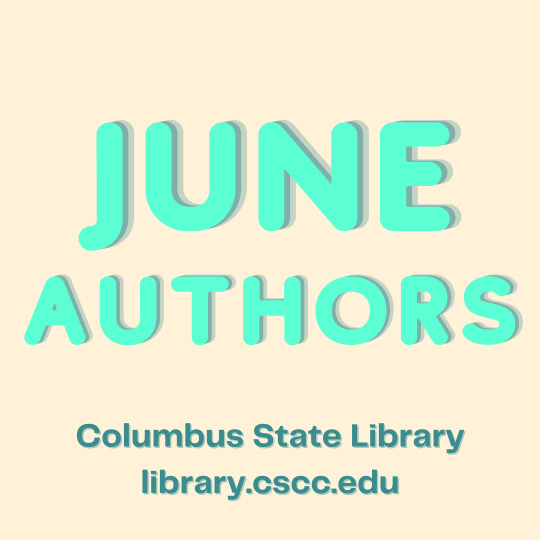
[Square graphic with a pale tan background and text in varying shades of green. Text reads: “June Authors / Columbus State Library / library.cscc.edu”.]
Some amazing authors have birthdays in June! Follow the links below to find their works in our collection and in the OhioLINK catalog.
Thomas Hardy (June 2, 1840), English novelist and poet. Notable works: Tess of the D’Urbervilles, Far from the Madding Crowd, Jude the Obscure.
Allen Ginsberg (June 3, 1926), core member of the Beat movement. Notable works: “Howl,” “Kaddish,” “America.”
Gwendolyn Brooks (June 7, 1917), Pulitzer Prize-winner and Poet Laureate. Notable works: A Street in Bronzeville, In the Mecca, Riot.
Maurice Sendak (June 10, 1928), beloved and many-times-honored author and illustrator. Notable works: Where the Wild Things Are, In the Night Kitchen, Outside Over There.
William Butler Yeats (June 13, 1865), celebrated poet, dramatist, and occultist who once kicked Aleister Crowley down a flight of stairs. Notable works: “An Irish Airman foresees his Death,” “The Second Coming,” “Easter, 1916.”
Harriet Beecher Stowe (June 14, 1811), abolitionist and author of Uncle Tom’s Cabin and other works.
James Weldon Johnson (June 17, 1871), author, professor, and civil rights activist. Notable works: "Lift Ev'ry Voice and Sing,” God's Trombones: Seven Negro Sermons in Verse, The Autobiography of an Ex-Colored Man.
Erich Maria Remarque (June 22, 1898), author of All Quiet on the Western Front and other works.
Octavia Butler (June 22, 1947), winner of multiple Hugo and Nebula awards as well as the MacArthur “Genius Grant.” Notable works: the Parable series, Kindred, the Patternist series.
Antoine de Saint-Exupéry (June 29, 1900), author and pilot. Notable works: Wind, Sand, and Stars, The Little Prince, Night Flight.
2 notes
·
View notes
Text
Events 4.29
801 – An earthquake in the Central Apennines hits Rome and Spoleto, damaging the basilica of San Paolo Fuori le Mura. 1091 – Battle of Levounion: The Pechenegs are defeated by Byzantine Emperor Alexios I Komnenos. 1386 – Battle of the Vikhra River: The Principality of Smolensk is defeated by the Grand Duchy of Lithuania and becomes its vassal. 1429 – Joan of Arc arrives to relieve the Siege of Orléans. 1483 – Gran Canaria, the main island of the Canary Islands, is conquered by the Kingdom of Castile. 1521 – Swedish War of Liberation: Swedish troops defeat a Danish force in the Battle of Västerås. 1760 – French forces commence the siege of Quebec which is held by the British. 1770 – James Cook arrives in Australia at Botany Bay, which he names. 1781 – American Revolutionary War: British and French ships clash in the Battle of Fort Royal off the coast of Martinique. 1826 – The galaxy Centaurus A or NGC 5128 is discovered by James Dunlop. 1861 – Maryland in the American Civil War: Maryland's House of Delegates votes not to secede from the Union. 1862 – American Civil War: The Capture of New Orleans by Union forces under David Farragut. 1864 – Theta Xi fraternity is founded at Rensselaer Polytechnic Institute, the only fraternity to be founded during the American Civil War. 1903 – A landslide kills 70 people in Frank, in the District of Alberta, Canada. 1910 – The Parliament of the United Kingdom passes the People's Budget, the first budget in British history with the expressed intent of redistributing wealth among the British public. 1911 – Tsinghua University, one of mainland China's leading universities, is founded. 1916 – World War I: The UK's 6th Indian Division surrenders to Ottoman Forces at the Siege of Kut in one of the largest surrenders of British forces up to that point. 1916 – Easter Rising: After six days of fighting, Irish rebel leaders surrender to British forces in Dublin, bringing the Easter Rising to an end. 1944 – World War II: New Zealand-born SOE agent Nancy Wake, a leading figure in the French Resistance and the Gestapo's most wanted person, parachutes back into France to be a liaison between London and the local maquis group. 1945 – World War II: The Surrender of Caserta is signed by the commander of German forces in Italy. 1945 – World War II: Airdrops of food begin over German-occupied regions of the Netherlands. 1945 – World War II: HMS Goodall (K479) is torpedoed by U-286 outside the Kola Inlet, becoming the last Royal Navy ship to be sunk in the European theatre of World War II. 1945 – World War II: Adolf Hitler marries his longtime partner Eva Braun in a Berlin bunker and designates Admiral Karl Dönitz as his successor. 1945 – Dachau concentration camp is liberated by United States troops. 1945 – The Italian commune of Fornovo di Taro is liberated from German forces by Brazilian forces. 1946 – The International Military Tribunal for the Far East convenes and indicts former Prime Minister of Japan Hideki Tojo and 28 former Japanese leaders for war crimes. 1951 – Tibetan delegates arrive in Beijing and sign a Seventeen Point Agreement for Chinese sovereignty and Tibetan autonomy. 1952 – Pan Am Flight 202 crashes into the Amazon basin near Carolina, Maranhão, Brazil, killing 50 people. 1953 – The first U.S. experimental 3D television broadcast shows an episode of Space Patrol on Los Angeles ABC affiliate KECA-TV. 1965 – Pakistan's Space and Upper Atmosphere Research Commission (SUPARCO) successfully launches its seventh rocket in its Rehber series. 1967 – After refusing induction into the United States Army the previous day, Muhammad Ali is stripped of his boxing title. 1968 – The controversial musical Hair, a product of the hippie counter-culture and sexual revolution of the 1960s, opens at the Biltmore Theatre on Broadway, with some of its songs becoming anthems of the anti-Vietnam War movement. 1970 – Vietnam War: United States and South Vietnamese forces invade Cambodia to hunt Viet Cong. 1974 – Watergate scandal: United States President Richard Nixon announces the release of edited transcripts of White House tape recordings relating to the scandal. 1975 – Vietnam War: Operation Frequent Wind: The U.S. begins to evacuate U.S. citizens from Saigon before an expected North Vietnamese takeover. U.S. involvement in the war comes to an end. 1975 – Vietnam War: The North Vietnamese army completes its capture of all parts of South Vietnam-held Trường Sa Islands. 1986 – A fire at the Central library of the Los Angeles Public Library damages or destroys 400,000 books and other items. 1986 – The United States Navy aircraft carrier USS Enterprise becomes the first nuclear-powered aircraft carrier to transit the Suez Canal, navigating from the Red Sea to the Mediterranean Sea to relieve the USS Coral Sea. 1986 – Chernobyl disaster: American and European spy satellites capture the ruins of the No. 4 reactor at the Chernobyl Power Plant. 1991 – A cyclone strikes the Chittagong district of southeastern Bangladesh with winds of around 155 miles per hour (249 km/h), killing at least 138,000 people and leaving as many as ten million homeless. 1991 – The 7.0 Mw Racha earthquake affects Georgia with a maximum MSK intensity of IX (Destructive), killing 270 people. 1992 – Riots in Los Angeles, following the acquittal of police officers charged with excessive force in the beating of Rodney King. Over the next three days 63 people are killed and hundreds of buildings are destroyed. 1997 – The Chemical Weapons Convention of 1993 enters into force, outlawing the production, stockpiling and use of chemical weapons by its signatories. 2004 – The final Oldsmobile is built in Lansing, Michigan, ending 107 years of vehicle production. 2011 – The Wedding of Prince William and Catherine Middleton takes place at Westminster Abbey in London. 2013 – A powerful explosion occurs in an office building in Prague, believed to have been caused by natural gas, and injures 43 people. 2013 – National Airlines Flight 102, a Boeing 747-400 freighter aircraft, crashes during takeoff from Bagram Airfield in Parwan Province, Afghanistan, killing seven people. 2015 – A baseball game between the Baltimore Orioles and the Chicago White Sox sets the all-time low attendance mark for Major League Baseball. Zero fans were in attendance for the game, as the stadium was officially closed to the public due to the 2015 Baltimore protests.
1 note
·
View note
Text
Jaishankar visits General Post Office Museum, meets former Irish PM Varadkar in Dublin
Dublin: External Affairs Minister (EAM) S. Jaishankar began his visit to Ireland from the iconic General Post Office Museum, Trinity College and interacted with Irish leaders such as former PM Leo Varadkar. The 1916 Easter Rising depicted in the General Post Office Museum has a special “meaning for so many who fought for freedom from colonialism”, he said Thursday. In a series of posts on X, the…
0 notes
Text
🌉📖 Walking Dublin with Ulysses: Episode 4 – O’Connell Bridge and the GPO 🌟📯
Our literary exploration brings us to the bustling heart of Dublin: O’Connell Bridge and the nearby General Post Office (GPO). These landmarks anchor the city’s vibrant energy and played a pivotal role in James Joyce’s Ulysses.
O'Connell Bridge: A Crossroads of Stories Spanning the River Liffey, O’Connell Bridge is more than a functional crossing—it’s a stage for the unfolding drama of Dublin life. ️ As you stroll across, take in the views of the city’s iconic skyline, framed by historic buildings and the lively quaysides. Joyce captured the bridge’s energy as a microcosm of Dublin, where diverse lives intersect and stories collide. ️️
To fully immerse yourself, pause mid-bridge, just as Bloom might have done, and take in the vibrant scenes around you: the flowing river, the passing trams, and the rhythm of the streets. Let the experience connect you to Joyce’s vision of the city as a living, breathing organism.
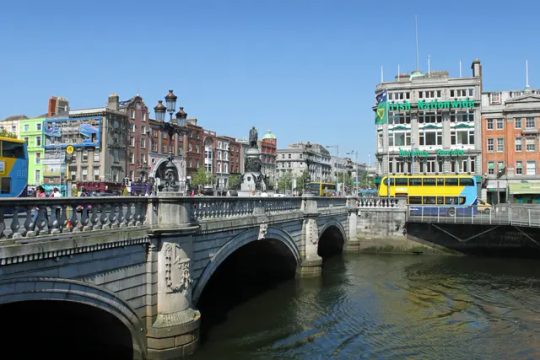

The GPO: A Symbol of History and Identity Just a short walk from the bridge stands the General Post Office (GPO), a site steeped in Irish history and national identity. This landmark, immortalized by its role in the 1916 Easter Rising, represents resilience and transformation—a fitting complement to Joyce’s exploration of change and continuity in Dublin. While not a direct feature of Ulysses, the GPO’s grandeur and cultural significance add another layer to your literary journey, providing context for the world Joyce captured so vividly. ️ Interactive Activities: Street Performances on the Bridge Bring Ulysses to life by participating in or watching street performances on O’Connell Bridge. Imagine a lively reading of the novel’s street scenes, echoing Bloom’s observations of vendors, passersby, and city life. These performances turn the bridge into an open-air theater, blending literature with the dynamic energy of modern Dublin. ️

Why Visit O’Connell Bridge and the GPO? These landmarks are not just physical spaces—they’re windows into Joyce’s Dublin, where every street corner and crossing teems with stories and meaning. Whether you’re marveling at the city’s architectural beauty or reflecting on its rich history, this stop offers a unique perspective on the interplay between literature and place.

Stay Connected on Our Journey! O’Connell Bridge and the GPO are essential chapters in our Walking Dublin with Ulysses series. ️ Follow along as we delve deeper into Joyce’s masterpiece, uncovering the layers of meaning hidden in Dublin’s streets and landmarks. Have you stood on O’Connell Bridge or visited the GPO? What insights did the experience bring to your understanding of Ulysses or Dublin itself? Share your reflections or photos with us below!
0 notes
Text
Eamon Bulfin, the Irish-Argentinian who hoisted the Green Flag of the Republic over the GPO.
Eamon Bulfin was an Argentine-born Irish republican. A former pupil at Pádraig Pearse’s school St Enda’s (Sgoil Éanna), in Rathfarnham, Dublin. Bulfin was a member of the Irish Volunteers and the IRB and along with some fellow St Enda’s students created home-made bombs in the school’s basement in preparation for the Easter Rising. He was stationed in the GPO for the Rising and raised one of the…
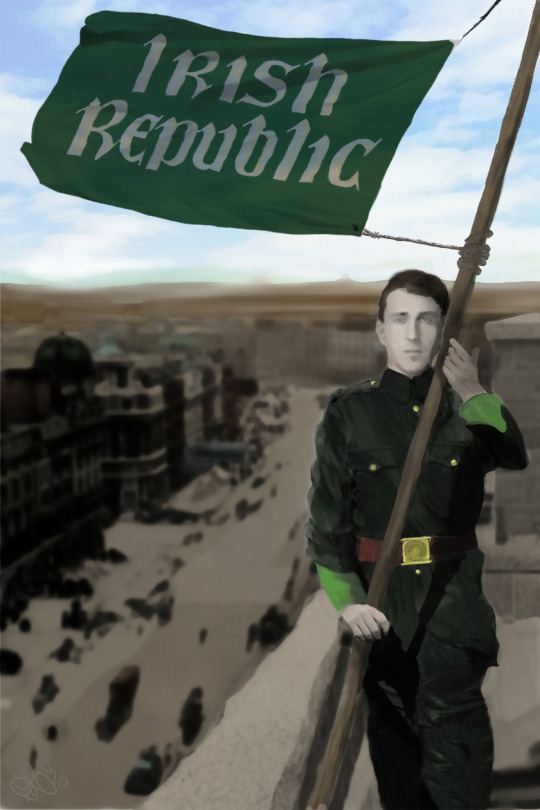
View On WordPress
#1916 Easter Rising#Éamon De Valera#Bulfin Road#Declan Kerr Easter 1916 Series#Dublin#Eamon Bulfin#Frongoch prison#General Post Office#Green Flag of the Republic#Inchicore#IRB#Ireland#Irish Argentinian#Padraig Pearse#St. Enda&039;s
11 notes
·
View notes
Text
Holidays 4.24
Holidays
Action Day for Tolerance and Respect between People (Argentina)
All Souls’ Day (Transdniestra)
Ambivalence Day
Armenian Genocide Remembrance Day (Armenia)
California Day of Remembrance of the Armenian Genocide (California)
Concord Day (Niger)
Day for the Naming of Rocks and Planets
Day of Silence (anti-bullying student protest)
Fashion Revolution Day
Firefly Day
Gathering of Nations Pow Wow (New Mexico)
Genocide Remembrance Day (Armenia)
International Day of Feminist Solidarity Against Transnational Corporations
International Day of Multilateralism and Diplomacy for Peace
International Watch Firefly Day
International Youth Solidarity Day
Kapyong Day (Australia, Canada)
Labour Safety Day (Bangladesh)
Library of Congress Day
Loktantra Diwas (Democracy Day; Nepal)
National Brandon Day
National Bucket List Day
National Dog Day (Finland)
National Kiss of Hope Day
National Lingerie Day
National Panchayati Raj Day (India)
National Physics Day
National Pool Opening Day
National Remembrance of Man's Inhumanity To Man Day
National Report Medicare Advantage Fraud Day
National Scream Day
New Kids on the Block Day
Newman Day
Oil in the Middle East Day
Pastele Blajinilor (Moldova)
Remembrance Day of Deportees (France)
Republic Day (The Gambia)
Right to Read Day
Spring Cat Cleaning Day
St. Mark’s Eve (UK)
Trojan Horse Day
Walk @ Lunch Day
World Anti-Colonialism Day
World Blind Sports Day
World Corrosion Awareness Day
World Day for Laboratory Animals (UN)
World Immunization Day
World Swimzi Day
World YMCA Day
Food & Drink Celebrations
National Pigs-in-a-Blanket Day
Sauvignon Blanc Day
Soda Fountain Day
4th & Last Monday in April
Confederate Memorial Day (AL, FL, GA) [4th Monday]
Confederate Memorial Day (Mississippi) [Last Monday]
Public Library Day [Monday of Library Week]
School Librarian Day [Monday of Library Week]
Independence Days
Ireland (a.k.a. Easter Rising; from UK, 1916)
Shireroth (Declared; 2000) [unrecognized]
Feast Days
Benedict Menni (Christian; Saint)
Beuve of Rheims (Christian; Saint)
Commodus Day (Church of the SubGenius; Saint)
Dermot of Armagh (Christian; Saint)
Doda of Rheims (Christian; Saint)
Dyfnan of Anglesey (Christian; Saint)
Ecgberht of Ripon (Christian; Saint)
Feast of Eros (Ancient Greece)
Feast of Hermes Trismegistus (patron of alchemy)
Fidelis of Sigmaringen (Christian; Saint)
Gregory of Elvira (Christian; Saint)
Hairball Awareness Day (Pastafarian)
Ivo of Ramsey (Christian; Saint)
Johann Walter (Lutheran)
Kuningan (Purification Ritual at Tirta Empul, Bali)
Leonidas (Positivist; Saint)
Ljubov Popova (Artology)
Mary of Clopas (Christian; Saint)
Mary Euphrasia Pelletier (Christian; Saint)
Mellitus (Christian; Saint)
Mick the Stick (Muppetism)
The Mothers (Celtic Prosperity Festival)
Nathaniel Hone (Artology)
Peter of Saint Joseph de Betancur (Christian; Saint)
Robert of Chase-Dies, Auvergne (Christian; Saint)
Salome (Christian; Disciple)
Susan DeLucci Day (Church of the SubGenius; Saint)
Walpurgisnacht, Day I (Pagan)
Wilfrid (Church of England)
William Firmatus (Christian; Saint)
Willem de Kooning (Artology)
Yom HaZikaron (a.k.a. Yom HaZikaron LeHalalei Ma’arakhot Yisrael ul’Nifge’ei Pe’ulot HaEivah or Memorial Day for the Fallen Soldiers of the Wars of Israel and Victims of Actions of Terrorism or יוֹם הזִּכָּרוֹן לְחַלְלֵי מַעֲרָכוֹת יִשְׂרָאֵל וּלְנִפְגְעֵי פְּעֻלּוֹת הָאֵיבָה) [4 Iyar]
Lucky & Unlucky Days
Historically Bad Day (Greeks enter Troy, Armenian genocide, Iran hostage rescue fails & 3 other tragedies) [3 of 11]
Sensho (先勝 Japan) [Good luck in the morning, bad luck in the afternoon.]
Unfortunate Day (Pagan) [23 of 57]
Premieres
The Adventures of Sherlock Holmes (UK TV Series; 1984)
The Age of Adaline (Film; 2015)
Assault and Peppered (WB MM Cartoon; 1965)
Border Song, by Elton John (Song; 1970)
The Brethren, by John Grisham (Novel; 2000)
A Bright Shining Lie, by Neil Sheehan (Historical Book; 1989)
Calaboose Moose or The Crime of Your Life (Rocky & Bullwinkle Cartoon, S1, Ep. 43; 1960)
Diamond Dogs, by David Bowie (Album; 1974)
Ex Machina (Film; 2015)
Extraction (Film; 2020)
Full Moon Fever, by Tom Petty (Album; 1989)
I Wonder Why, by Dion & The Belmonts (Song; 1958)
The Man Who Fell To Earth (TV Series; 2022)
The Outsiders, by S.E. Hinton (Novel; 1967)
Sliding Doors (Film; 1998)
Space, by James A. Michener (Novel; 1983)
There Goes My Baby, by The Drifters (Song; 1959)
Tom Thumb, by Henry Fielding (Play; 1730)
Valse Triste, by Jean Sibelius (Orchestral Work; 1904)
Waitress (Broadway Musical; 2016)
When a Felon Needs a Friend or Pantomime Quisling (Rocky & Bullwinkle Cartoon, S1, Ep. 44; 1960)
Woman is the N****r of the World, by John Lennon (Song; 1972)
Year of the Comet (Film; 1992)
Today’s Name Days
Egbert, Fidelis, Wilfried (Austria)
Fidel, Vjera, Vjeran (Croatia)
Jiří, Jiřina (Czech Republic)
Albertus (Denmark)
Aada, Iida, Vaida, Vanda (Estonia)
Albert, Altti, Pertti (Finland)
Fidèle (France)
Egbert, Marion, Virginia, Wilfried (Germany)
Achilles, Doukas, Elisavet, Elizabeth, Thavmastos (Greece)
György (Hungary)
Fedele (Italy)
Nameda, Varis, Visvaldis, Visvaris (Latvia)
Ervina, Fidelis, Kantrimas (Lithuania)
Albert, Olaug (Norway)
Aleksander, Aleksy, Egbert, Erwin, Erwina, Fidelis, Grzegorz, Horacjusz, Horacy (Poland)
Ilie, Iosif, Pasicrat, Sava, Valentin (Romania)
Juraj (Slovakia)
Fidel (Spain)
Vega (Sweden)
Isabel, Isabella (Ukraine)
Fidel, Fidelia, Marques, Marquez, Marquis, Marquise, Wilfred, Wilfredo (USA)
Today is Also…
Day of Year: Day 114 of 2024; 251 days remaining in the year
ISO: Day 1 of week 17 of 2023
Celtic Tree Calendar: Saille (Willow) [Day 9 of 28]
Chinese: Month 3 (Bing-Chen), Day 5 (Ren-Zi)
Chinese Year of the: Rabbit 4721 (until February 10, 2024)
Hebrew: 3 Iyar 5783
Islamic: 3 Shawwal 1444
J Cal: 23 Aqua; Twosday [23 of 30]
Julian: 11 April 2023
Moon: 21%: Waxing Crescent
Positivist: 2 Caesar (5th Month) [Leonidas]
Runic Half Month: Man (Human Being) [Day 15 of 15]
Season: Spring (Day 36 of 90)
Zodiac: Taurus (Day 5 of 30)
0 notes
Photo

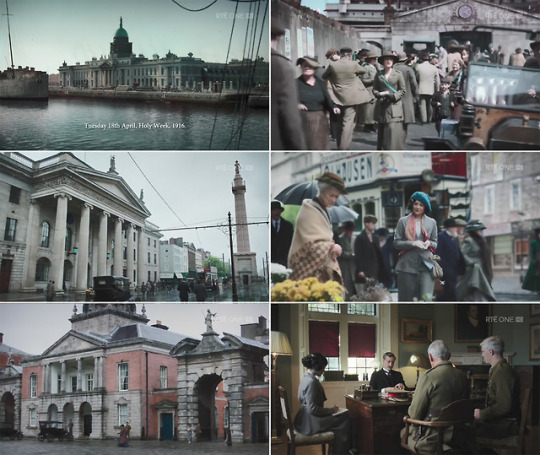

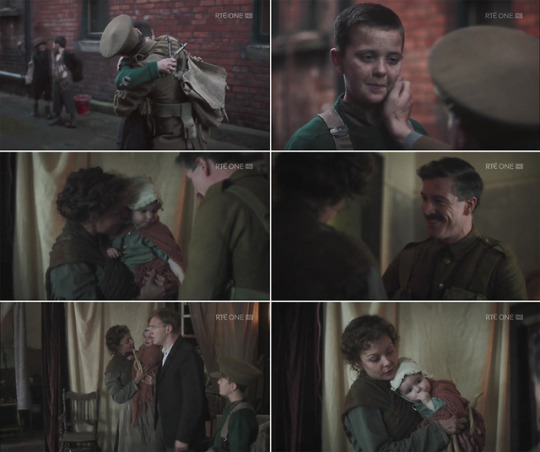
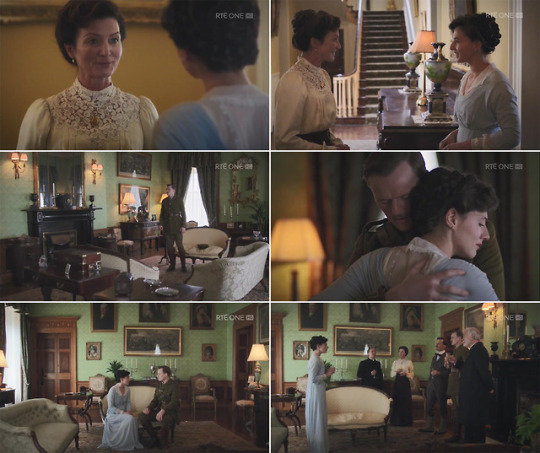
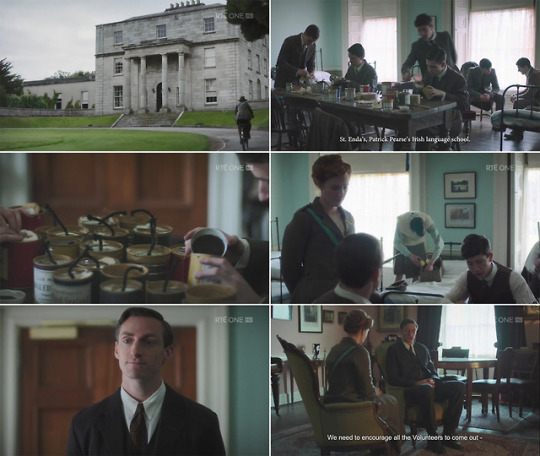

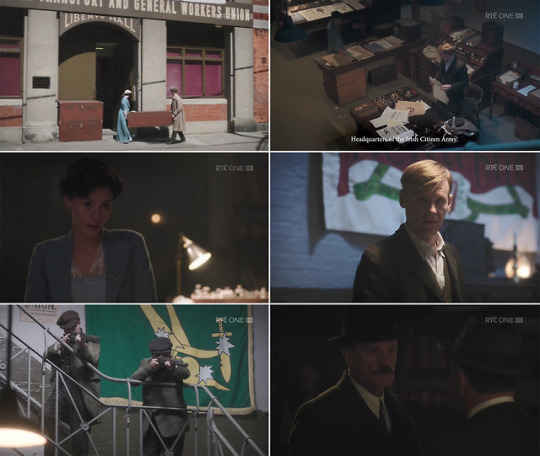
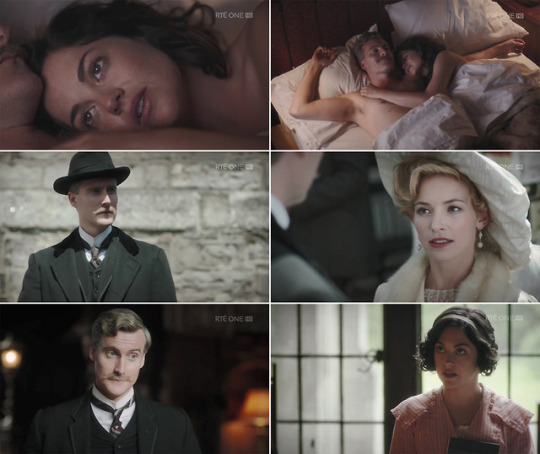

Rebellion, 2016 television miniseries
can’t wait to watch the sequel
#rebellion#rebellion series#rebellion 2016#Easter Rising#Ireland#1916 Rising#historical drama#Brian Gleeson#Charlie Murphy#Ruth Bradley#Sarah Greene#Paul Reid#Barry Ward#Perdita Weeks#movies#british tv-series#irish series
9 notes
·
View notes
Text
Sandman Easter Eggs
Real Easter Eggs in The Sandman Netflix series that have been noticed so far:
Warning there are spoilers in this list.
1. The Key to Hell (a major plot point in The Sandman: Season of Mists) is a sigil in the binding circle that holds Morpheus.
2. Gregory dying and little Goldie hatching may be foreshadowing for a certain comic storyline.
3. The little flowers that sprouted up when Gregory was uncreated are very similar to the red flowers that formed from the dripping blood on Morpheus's hands when he had to euthanize his son in The Sandman: Brief Lives.
4. (This was in the comics). Judy's ex is Donna AKA Foxglove, a major character in The Sandman: A game of you.
5. Gault's name might be an attempt to merge Brute and Glob's names together. The characters she replaced. Obviously they wouldn't use Groot.
6. The name of John Constantine's punk band is on a poster in episode 3. 7. The mad Mod witch is also on a poster in episode 3.
8. Mike Dringenberg is an artist for The Sandman comics. You will see a sign behind the Corinthian when he talks to Nimrod, The Good Doctor, and Funland. The sign reads "Mike's Drinks and Burgers."
9. The carvings on the gates of horn tell the story of Morpheus and Alianora and how he got his helm. They are exact replicas of the panels from The Sandman: Overture. There are two sets of gates in the Realm of Dreams (The gates were originally referenced in Homer's The Odyssey). One set of gates made of horn, and one set of gates made of ivory. The dreams that pass through the gates made of ivory are false and deceptive. The dreams that pass through the gates made of horn are true, whether literally or metaphorically. Morpheus prefers to use the horned gates so the ones you see him push open are the ones made of horn.
10. When Morpheus leaves The Corinthian in the first episode he is fully clothed. When he is summoned his clothing are gone and his helm is beaten up. This is because the events of The Sandman: Overture have happened in what was for us just a few seconds.
11. This is more trivia than anything. Squatterbloat is now being used for his original purpose of gatekeeper and guide. The guide in the comics was the rhyming demon, Etrigan. Rhyming is a sign of status among some demons and they do it with pride.
12. The episode Imperfect Hosts is pun on the fact that Cain, Abel, Lucien (now Lucienne), Destiny, Even (who hasn't appeared in the show yet), Mad Mod Witch (who hasn't appeared in the show), and The Three Witches (Hecate, Fates, Furies) were all old horror hosts. They hosted the DC Horror anthology comics similar to Tales from the Crypt. Cain hosted The House of Mystery. Abel hosted The House of Secrets. Lucien hosted Tales of Ghost Castle. The Three Witches hosted The Witching Hour. This pun existed in the comics as well. 13. After Abel's second murder in the episode Imperfect Hosts, you will see Cain snag a cookie (biscuit). This is a nod to the old House of Mystery comics where Cain had a sweet tooth. In one issue Karen Berger (founder of Vertigo and the one who took a chance on the original Sandman comics) bribed Cain with cookies.
14. Lyta is originally from a defunct continuity where she was Wonder Woman's daughter. Her name was short for Hippolyta, named after Wonder Woman's mother.
15. Jed was a character from the 1976 Sandman comics and now (in his dreams) wears the costume of that hero as a little call back to his origin. Hector Hall served as that hero for a time but that was left out of the TV show.
16. Hector is from a semi-defunct continuity where he was the grandson of Carter Hall (Hawkman). Hector and Lyta have been used repeatedly in DC comics and in their most recent appearances in JSA (2008) they died and their souls were taken into The Dreaming by their son, Daniel. This was Hector's second death because... comic books. He was revived after Sandman and then killed again.
17. Jed has twelve inch action figures of both Wonder Woman and Batman.
18. Morpheus's capture is in 1916 to overlap with the real world sleeping sickness that happened around that time.
19. Death being given an apple by a friendly fruit vender is from the comic Death: The High cost of Living.
20. Though not shown in the episode, the hunger Hob describes feeling but not being able to die from it- Morpheus experienced that in his captivity. In the comics the first thing he did when he escaped was eat, before even conjuring clothing. He raided a dream buffet. 21. The sigils in each Endless Gallery are supposed to be in age order. A book (Destiny), an Ankh (Death), the helm (Dream), a blank space (formerly a sword for Destruction), A heart (Desire), a hooked ring (Despair), and a swirl of color for Delirium. An illustration mistake put Death's ankh first in some of the early comics depicting Desire's gallery. That mistake was deliberately inserted into the TV series as a homage to the original comics. 22. Matthew The Raven was Matthew Cable (a character from Swamp Thing) when he was alive. If you would like a version of his backstory, watch the canceled 2019 Swamp Thing Series. Very different actor but that was the same character (originally). When they found out Swamp Thing would not get a second season they tacked on a scene of Matthew being killed just in case The Sandman got adapted since Matthew the raven was made from Matthew’s ghost. 23. Ric the Vic was an ally of John Constantine's in the comics. 24. The Boogey Man and Family Man (mentioned by the serial killers) were villains from DC comics. Family Man was actually the killer of John Constantine's father. Both Family Man and Boogey Man died. One in Swamp Thing, one in Hellblazer (John Constantine's comics). 25. John Dee is the old Justice League villain, Doctor Destiny. It was probably wise not to use his alias as it would confuse new fans with Destiny of The Endless. 26. Pandemonium (meaning "All the Demons”) is the capital city of Hell in John Milton's Paradise Lost. This is where the word comes from. In The Sandman Netflix series Pandemonium deliberately resembles The Vatican. 27. Matthew comments on how cold Hell is. Believe it or not the earliest depictions of Hell were of a very cold place because it was devoid of God's light, love, and warmth. It was medieval art that popularized the idea of Hell being hot. 28. The Wonder Woman 1984 movie borrows Morpheus's Dreamstone and reinvents it as a plot device with a different design. The actor who plays Abel is also in Wonder Woman 1984 as the man who wished for a cup of coffee. I choose to pretend it was Abel in disguise. 29. Many actors in The Sandman bonus episode Dream of a Thousand Cats and Calliope were in The Sandman Audio drama. David Tennant (Loki in the audio drama), Michael Sheen (Lucifer), Arthur Darvill (Shakespeare), James McAvoy (Morpheus), and Neil Gaiman.
30. Arthur Darvill has played three DC characters so far. Shakespeare (Sandman audio drama), Richard Madoc (Sandman Netflix series), and Rip Hunter (Legends of Tomorrow).
31. Mark Hamill has played The Joker (Batman animated series, animated movies and video games), Trickster (The Flash 1990s series and Justice League: Action), and Swamp Thing (Justice League Action) and now Mervyn Pumpkinhead (Sandman). Mark Hamill has also voiced Marvel characters like Hobgoblin (90s Spiderman animated series), and ironically he was Nightmare in Ultimate Spiderman (Animated series). Nightmare (ruler of the Dream Dimension) is pretty much Marvel’s equivalent of Dream if he had never had his “time out” bubble. Though Nightmare was created first he went under drastic revisions to make him more and more like Dream. In fact in the 2019 Deadpool: Annual 1, when Deadpool landed in Nightmare’s throne room he quips “Is Neil Gaiman going to sue us for this?” Bonus: 32. Cain and his house of Mystery appeared in the animated series Justice League: Action for the episode Trick or threat. 33. The grimoire used to summon and trap Morpheus was used in the Justice League: Action episode Supernatural adventures in Babysitting (though they used the wrong pronunciation. It’s Mawd-lin Grimoire, not Magda-lin Grimoire) even though it’s spent Magdalene Grimoire. 34. Death has an animated short called DC Showcase: Death. It is a bonus feature on the blu ray for the animated movie Wonder Woman: Bloodlines. 35. Morpheus’s helm appears as an Easter Egg in a Smallvile tie-in comic. 36. The storyline of the Lucifer TV show where Lucifer quits ruling Hell, goes to Earth, is followed by his loyal demon, Mazikeen, opens Lux, and takes up piano and singing is from The Sandman: Season of Mists. 37. The plot of Dead Boy Detectives is also from The Sandman: Season of Mists.
543 notes
·
View notes
Note
For the book ask game: 2 (waiting for the recommendations hehehe 👀)
Ooh! Definitely had to think about this. I often love a book when I read it and parts stay with me but then... my memory is so full of other things that I don't remember until I see it again and then I go, oh, I loved that one! So I'm probably missing some. Haha, with that caveat...
The Queen of Attolia by Megan Whalen Turner (Ancient Greece-inspired YA book with an unforgettable, incorrigable thief, a ruthless queen and fantastic plot twists)
At Swim, Two Boys by Jamie O'Neil (Literary Fiction, lyrical and beautifully descriptive LGBT love story set during the 1916 Easter Rising in Ireland)
Life After Life by Kate Atkinson (Literary Fiction/Fantasy, sort-of. A story about the grand events of the 20th century and how it affects one family through the eyes of a girl who keeps dying and being reborn and living alternate lives each time)
Outlander by Diana Gabaldon (Romance/Fantasy. Time travel romance that showed me how diverse this genre could be with a love story that still stays with me today, *swoon*)
Kushiel's Dart by Jacqueline Carey (Fantasy. High fantasy alternate France with BDSM elements, courtesan spies, court intigue and lush world-building.
All of these have first books in a series except the Queen of Attolia (it's the second- but you don't need to have read the first necessarily) and At Swim, Two Boys, which is a stand-alone novel.
(Book ask meme)
3 notes
·
View notes